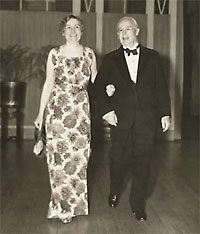Research
Control of biological and chemical processes with light
Understanding dynamic biological processes, such as the discrete steps involved in enzyme-ligand recognition and catalysis, requires the development of novel synthetic compounds that can act as reporters to identify these changes. We are interested in creating small molecule photoactive probes to target key medically relevant biological targets. This will enable us to address complex in vitro and in vivo biological problems, providing information about intricate, complex processes at the molecular level. We also want to develop the ability to control biological processes, using photoswitchable molecules. This research requires a multi-disciplinary approach, using chemistry to design probes with tailored features, biochemical techniques, and biophysics approaches to interrogate biomolecules.
Ruthenium complexes as DNA binding cytotoxins
Cancer is the second leading causes of death in the United States, and there is a pressing need for new drugs to address this disease. One of the greatest drawbacks of current treatments is their debilitating side effects, due to non-specific cytotoxicity. In contrast, “pro-drugs” are non-toxic until activated, allowing for both spatial and temporal control of their activity, facilitating selective targeting of cancerous tissues. Ruthenium complexes have been used for decades as nucleic acid binders and probes, due to their fortuitous combination of structural, electrochemical, and photophysical features. Since they are electro- and photo-active, there is the potential to develop these types of molecules as targeted chemotherapies that are less toxic than the classical drugs available. We are interested in developing photo-activated Ruthenium complexes which should act as inert “pro-drugs” until triggered by light, whereupon they can crosslink DNA. In addition, due to their mechanism of action, there is potential for their use as hypoxia-selective agents, allowing us to target these drug- and radiation-resistant types of tumors.
Dynamics of ligand binding
Heme containing enzymes as a model system How is it that ligands and substrates find their way to their binding sites in proteins? In the cytochrome P450 family of enzymes the active site is located deep inside the protein, and is often not accessible by the surrounding solvent. What kinds of dynamic motions does the protein go through to open up and bind the ligand, and what triggers these structural motions? What controls the protein dynamics and the ligand's pathway to the active site? Also, what distinguishes promiscuous enzymes from selective enzymes? Does substrate promiscuity relate to protein dynamics? We are interested in the where, how and why of protein binding events. We must first develop chemical tools so that we can chart the protein landscape from a ligand’s perspective so we can “see” the protein from a small molecule’s perspective. Photoaffinity labeled ligand analogues will allow us to identify the key interactions of the small molecule with the protein. With these probes, we can explore the complex, fundamental process of molecular recognition. Understanding this process will facilitate the development of effectors of protein function.
Dual emission from coordination complexes
A few years ago, we discovered a specific type of Ruthenium complexes that break the most fundamental rule of photophysics: instead of a single emissive excited state, they possess multiple excited states that can emit simultaneously, producing dual emission. The structural and electronic features that lead to this extraordinary behavior will be explored through the synthesis of substituted, highly conjugated ligands, and incorporation of other types of metal centers. The goal is to produce a full library of systems that show dual emission, with tunable energies, efficiencies, and the potential for selectively accessing each excited state. We will investigate if the selective population of excited states on different ligands could be used to develop simple “molecular switches”, ratiometric emissive probes, and systems for improved solar energy conversion.




